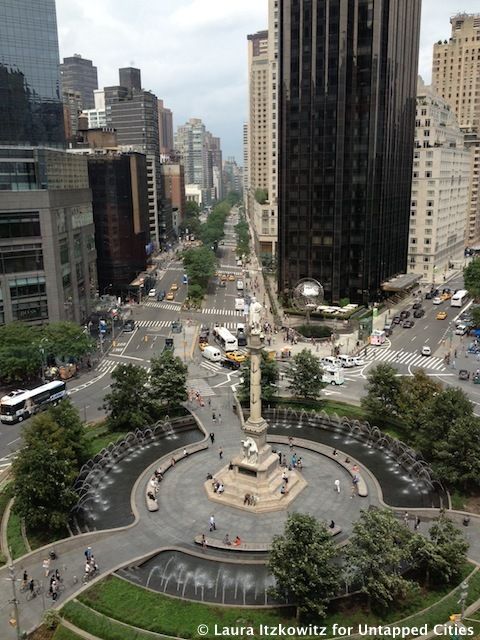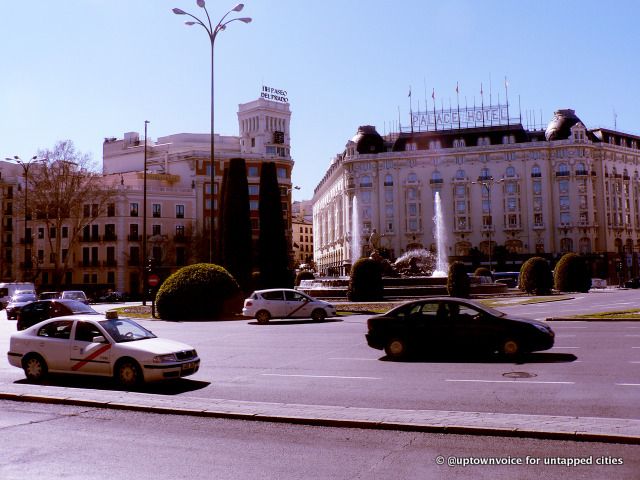Last-Minute NYC Holiday Gift Guide 🎁
We’ve created a holiday gift guide with presents for the intrepid New Yorker that should arrive just in time—


View of Columbus Circle today from the Robert restaurant at the MAD Museum, with an aerial view of the redesigned public plaza. Columbus Circle (a traffic circle, as shown by the walkways to access the center) viewed from inside the Time Warner Cable Building.
This week we’ll celebrate Pi-Day on 3/14, so at HQ we’re thinking about circles. Did you know, the number of roundabouts and traffic circles around the world is in the thousands compared to only a couple hundred in the United States? The two things in the US refer to the same thing, generally speaking. Technically, the only thing that differentiates the two is the circle in the very middle. A traffic circle uses stop signs and/or signals to direct traffic, and allows people to traverse circular lanes and stop in the center. A roundabout on the other hand prohibits crossing to the center circle (as it is very dangerous) and only allows pedestrians to cross the streets that branch out from the circle. There are a few other technicalities left to talk about.

This roundabout in Madrid, Spain holds the spectacle of Apollo’s statue. But you’d have to be brave to safely traverse the circular lanes.
There are actually two kinds of traffic circles: those where the circling cars have the right-of-way and those where the entering cars do. The right-of-way is yielded by entering cars who must reduce their speed until a gap in the circle. Modern roundabouts take advantage of street engineering that utilize curves to create an environment that regulates speed, while traffic circles “emphasize high-speed merging and weaving, made possible by larger diameters and tangential (straight) entrances” according to the New York State Dept. of Transportation.
In addition, the DoT explains one interesting difference between these two types of rotary:
In giving priority to entering vehicles, a traffic circle tends to lock up at higher volumes. The operation of a traffic circle is further compromised by the high speed environment in which large gaps are required for proper merging. These deficiencies have been essentially eliminated with the modern roundabout designs.
Stay tuned for more Cities 101 posts on Untapped Cities, getting you the information on how our cities work! You can look forward to more from our Pi-Day festivities coming up. Get in touch with the author at @uptownvoice.
Subscribe to our newsletter